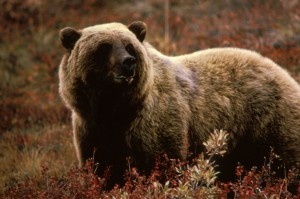
The current court challenge to the Wyoming and Idaho grizzly hunt is only the tip of the iceberg . . .
While most stories about last week’s grizzly bear court hearing trumpeted the last-minute suspension of trophy hunts in Wyoming and Idaho, the lawsuit had nothing to do with the legality of grizzly hunting.
And while it did focus on whether grizzlies in the Greater Yellowstone Ecosystem still need federal protection, the eventual decision will affect a far larger landscape. That points up a conundrum of the Endangered Species Act: It’s one challenge to recover a species, but quite another to delist it.
U.S. District Judge Dana Christensen didn’t render a decision from the bench on Thursday as many expected he might. But he did grant a 14-day restraining order blocking Wyoming and Idaho from starting their grizzly hunts on Saturday.
See also…
Federal judge orders two-week delay in grizzly hunts (Missoulian)
Grizzlies Have Recovered, Officials Say; Now Montanans Have To Get Along With Them (NPR)





